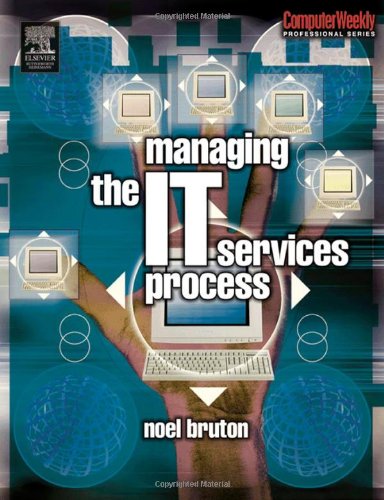Ulla Koivukoski, Vilho Räisänen9780470021446, 0470021446
Table of contents :
Team-kB……Page 1
Contents……Page 8
Ulla Koivukoski 1.1 Introduction to managing mobile services……Page 38
1.2 The business environment……Page 42
1.3.1 The end-user perspective……Page 44
1.3.2 The network operator and service provider perspective……Page 45
1.4 The shifting focus of service management……Page 47
1.5.1 From customer requirements to service development……Page 48
1.5.2 From customer experience to service optimization……Page 50
1.6 Re-shaping the positioning of BSS and OSS……Page 51
1.7 Ways to capture market opportunity……Page 52
1.8 References……Page 53
Sonja Hilavuo 2.1 Introduction……Page 54
2.2 Mobile services evolution……Page 55
2.2.1 Voice and other calls……Page 58
2.2.2 Person-to-person messaging……Page 59
2.2.3 Content services……Page 60
2.2.4 Transaction services……Page 63
2.2.5 Business data services……Page 64
2.2.6 Advertising……Page 65
2.3.1 Customers……Page 66
2.3.2 Mobile operators……Page 69
2.3.3 Service, content and application providers……Page 71
2.4 Business model evolution……Page 74
2.5 Conclusion……Page 81
Ulla Koivukoski 3.1 Introduction……Page 84
3.2 The business environment encouraging service development……Page 86
3.3 Business model……Page 87
3.5.1 The roles of the players in implementation……Page 89
3.5.2 Deployment……Page 90
3.6.1 End-user perspective……Page 92
3.6.2 Technology perspective……Page 93
3.6.3 Business perspective……Page 94
Elena Lialiamou, Mikko Ruhanen and Pertti Pielismaa 4.1 Introduction……Page 96
4.2.1 The service lifecycle……Page 98
4.2.2 Operating roles in service management……Page 100
4.3 Service management architectures……Page 102
4.4.1 Implications of a multi-provider environment……Page 105
4.4.2 Device management……Page 106
4.4.3 Personalization and differentiation……Page 109
4.4.4 Service convergence……Page 110
4.4.6 Inventory……Page 111
4.4.8 Conclusion……Page 112
4.5 Service management for GSM networks……Page 113
4.6 Service management for GPRS and mobile data networks……Page 116
4.7 Service management for 3G and multimedia……Page 117
4.8 Reference……Page 121
Margareta Bj ¨orksten, P ´eter Dornbach, Frederick Hirsch, ValtteriNiemi, Pertti Pielismaa, Peeter Pruuden and Vilho R ¨ais ¨anen 5.1 Introduction……Page 122
5.2 IETF……Page 124
5.3 Service availability forum……Page 125
5.4 3GPP……Page 126
5.5.1 History……Page 128
5.6 W3C, OASIS and WS-I……Page 133
5.6.1 W3C……Page 134
5.6.2 OASIS……Page 136
5.6.3 WS-I……Page 137
5.7.1 History and organization……Page 138
5.7.2 Liberty and network identity……Page 139
5.7.3 The Liberty Specifications in detail……Page 142
5.7.4 Implementation status……Page 146
5.8 TMF……Page 147
5.10 OSS/J……Page 152
5.11 Conclusion……Page 154
5.12 References……Page 155
Margareta Bj ¨orksten, G ´abor Marton, Zolt ´an N ´emeth,Valtteri Niemi and Vilho R ¨ais ¨anen 6.1 Introduction……Page 158
6.2 Crash course in mobile network technologies……Page 165
6.3 Requirements of services……Page 167
6.3.1 Service class 1: content service……Page 168
6.3.2 Service class 2: augmented VoIP……Page 170
6.3.3 Summary……Page 173
6.4 Characteristics of services……Page 183
6.4.2 Service class 2: augmented VoIP……Page 184
6.4.3 Summary……Page 185
6.5 Implications for service and network management……Page 186
6.6 References……Page 187
Margareta Bj ¨orksten, G ´abor Marton, Zolt ´an N ´emeth, ValtteriNiemi, Pertti Pielismaa, Vilho R ¨ais ¨anen and Mikko Ruhanen 7.1 Introduction……Page 190
7.1.1 Generic issues……Page 191
7.1.2 User classification……Page 192
7.1.3 Service provisioning in wireless systems……Page 193
7.1.4 Terminals……Page 195
7.1.5 New service requirements……Page 196
7.2 Requirements for service modelling……Page 198
7.2.1 Business requirements……Page 199
7.2.2 Technical requirements……Page 201
7.3 Existing service models……Page 205
7.3.1 Summary……Page 213
7.4 Service model framework……Page 214
7.5 Example: augmented VoIP……Page 218
7.6 Conclusion……Page 220
7.7 References……Page 221
Tuija Hurtta and Vilho R ¨ais ¨anen 8.1 Introduction……Page 226
8.2.2 Service flows……Page 227
8.3 Business setting……Page 228
8.3.1 Core network evolution – intelligent edge……Page 229
8.3.2 Connectivity……Page 231
8.3.3 Service control……Page 232
8.4 Service information……Page 235
8.5 Service control procedures……Page 236
8.5.1 Service control at the access bearer establishment……Page 237
8.5.2 Service control update……Page 238
8.5.3 Service control at access bearer release……Page 239
8.6 Key findings……Page 240
Margareta Bj ¨orksten, P ´eter Dornbach, Sonja Hilavuo,Frederick Hirsch, Tuija Hurtta, Ulla Koivukoski, Elena Lialiamou,G ´abor Marton, Zolt ´an N ´emeth, Valtteri Niemi, Peeter Pruuden,Pertti Pielismaa, Vilho R ¨ais ¨anen and Mikko Ruhanen 9.1 Introduction……Page 242
9.2 The end-user viewpoint……Page 243
9.3 The business viewpoint……Page 245
9.4 The technology viewpoint……Page 246
9.5 Conclusion……Page 248
9.6 References……Page 249
10 Summary……Page 250
Appendix: Service Framework Team Roles……Page 254
Index……Page 262







Reviews
There are no reviews yet.